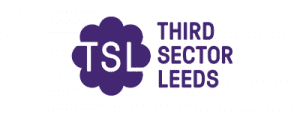Embedding Equality and Diversity Into Decision Making
Added: 22/04/2021
Third Sector Leeds
Thoughts from a Forum Central/Touchstone Session
One of the key aims for Third Sector Leeds (TSL) in 2021 is to work to enable third sector organisations to improve their inclusion, equality and diversity practice.
Obviously, this is a massive area of work so we’ve decided to start by focusing on how the third sector can take action to create a more diverse workforce and how it can get people with a wide range of views and backgrounds at the most senior levels. We think that central to that aim is developing a workplace culture that is welcoming and supportive for all people.
We’ve been working closely with Forum Central on this agenda, so it was a real pleasure to attend a webinar on Tuesday 20 April organised by Forum Central and led by Arfan Hanif, Operations Director at Touchstone.

The session looked at the context for diversity and reflected on the fact that after decades of action our society still has long way to go. It also touched on the business case for diversity and inclusion – if your organisation doesn’t look and feel like the communities it serves it can’t do its job properly.
Key notes from the session
Slides from the event will be available soon and there is a further session planned – but looking back at our notes we found some great hints and tips about how organisation leaders can drive change and some practical ideas for change that we thought we’d share (it’s worth noting we’ve probably missed a few).
- Set the culture – organisation leaders set the tone – so they need to be vocal advocates for inclusion, equality and diversity and ensure that their organisation is active in delivering change. Staff and volunteers can be leaders too, by joining the effort to create a welcoming culture, sharing their thoughts about the change that is needed in their organisation, and being advocates for change across society.
- Put Inclusion, Equality and Diversity in your HR and Finance discussions – if you really want a more welcoming culture and greater diversity you need to ensure that you:
- Build your HR approach around the central aim of creating a more diverse workforce.
- Whenever you discuss your organisations finances, discuss whether the way the organisation allocates resources achieves positive change around inclusion, equality and diversity – delivering change is about moving money and power.
- Know your communities and your staff team – put energy into collecting information about the diversity of your staff team and the communities you serve. Then, don’t just note it (or worse file it) measure the organisation against this data and map a course to change.
- Co-produce everything – develop great ways of listening to staff and communities (examples were an annual survey and developing staff networks) and then ensure that your policy and practice is co-produced. How can your organisation approach be truly welcoming if you haven’t talked to people about how they feel and what makes them tick?

How can I make my recruitment process more accessible?
There was a great question from one of the attendees about how to make your recruitment more accessible. Of course, a key thing is having a reputation for being welcoming of all people – it’s a virtuous circle if you’re good at this stuff people will want to come and work for you.
Even if you have that reputation, you still need to keep working at it. Some ideas were:
- Build pathways from volunteering – work to make your volunteer roles accessible and welcoming and then actively promote job opportunities to your volunteers.
- Use word of mouth – make sure you advertise your roles widely – in the communities you work with and through your networks not just through the ‘traditional’ routes.
- Make sure your job spec values all skills – lots of organisations focus on lived experience and transferable skills, not just academic record.
- Look at your interview process – not everyone responds well to ‘sight unseen’ questions – this form of interview only tests the narrow skill of ‘how do you respond when you’re put on the spot’; some organisations provide the questions in advance to give candidates ‘take up time’.

Author of this blog:
Richard Warrington (Coordinator – Forums and Networks )
Voluntary Action Leeds
Third Sector Leeds

